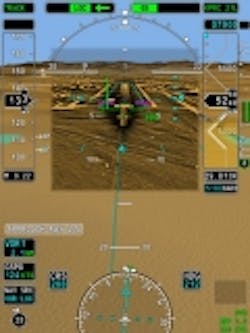Navy to purchase GPS VME boards from Dynamics Research Corp. for shipboard vertical-launch missile system
PHILADELPHIA, 1 July 2010. Dynamics Research Corp. (DRC) in Andover, Mass., will the supply the U.S. Navy with 15 VME boards to support the U.S. Navy Lockheed Martin MK 41 Vertical Launching System (VLS), Next Generation (NG-2) equipment and performance of environmental testing.
DRC will supply 15 VMEGlobal Positioning System (GPS) Embedded Module V Selective Availability Anti-Spoofing Module 3.3 boards and engineering drawings under terms of a contract anticipated from the Naval Surface Warfare Center Carderock Division in Philadelphia. The value of the contract has not yet been determined.
The MK 41 Vertical Launching System (VLS), built by the Lockheed Martin Corp. Naval Mission Systems and Sensors (MS2) Marine Systems unit in Baltimore, is a standard in shipborne missile launching system that fires missiles for anti-air warfare, antisubmarine warfare, ship self-defense, strike warfare, and anti-surface warfare.
Although the Navy plans to procure these VME GPS modules only from DRC, other VME companies may submit written proposals for consideration until 30 July 2010.
Send written proposals to the Naval Surface Warfare Center Carderock Division Philadelphia Office, 5001 South Broad Street, Philadelphia, PA 19112-1403, Attn: Anthony V. Ricciardi, Code 3353.
The Navy deploys MK 41 VLS on AEGIS-equipped Ticonderoga-class cruisers and Spruance- and Arleigh Burke-class destroyers, and will use this system aboard next-generation surface warships to fire munitions such as the Standard Missile, Tomahawk missile, and Evolved SeaSparrow Missiles (ESSMs).
VLS is able to fire missiles quickly from canisters against hostile threats. The missile launcher consists of an eight-cell missile module able to launch missiles used against hostile aircraft, missiles and surface units. The Mk 25 Quad-Pack enables the system to store and fire four ESSMs in a canister space that normally contains one missile.
The VLS launch control units receive launch orders from the multi-function computer plant (MFCP). In response, the launch control units select and issue prelaunch and launch commands to the selected missile in the VLS launcher, according to Lockheed Martin.
The status panel receives status and hazard signals from the VLS monitoring assemblies, and sends launcher hazard and module status signals to the ship central control station.
For more information contact Dynamics Research Corp. online at www.drc.com, Lockheed Martin Mission Systems and Sensors at www.lockheedmartin.com/ms2, or the Naval Surface Warfare Center Carderock Division at www.navsea.navy.mil/nswc/carderock.
